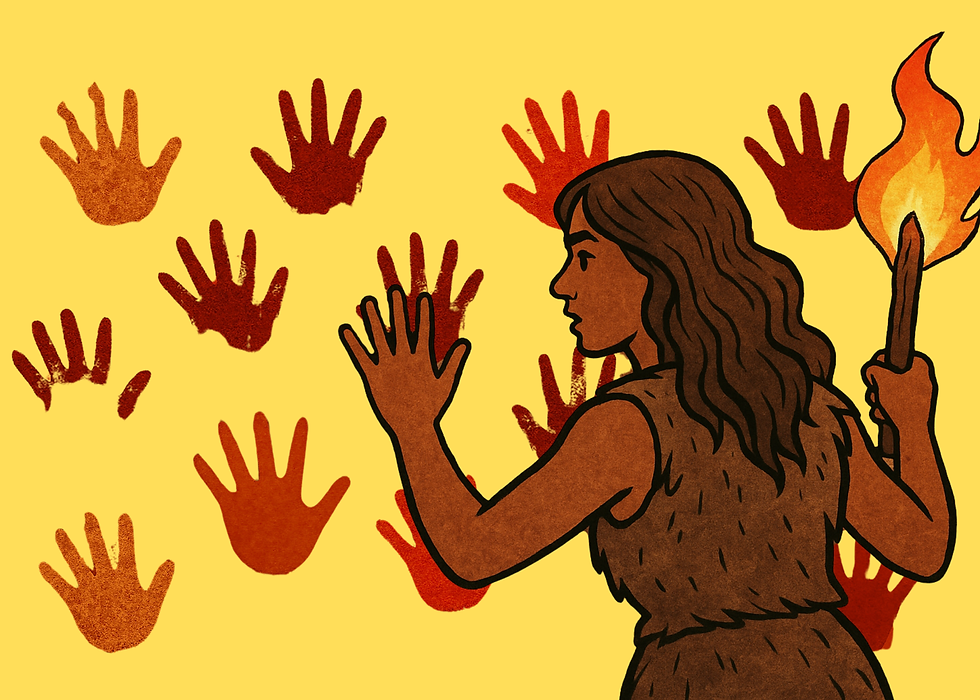The Return of Retro: The Power of Nostalgia Marketing in the Age of AI
- Zeba Khan
- Sep 16
- 3 min read
Updated: Sep 17
AI may be an unlicensed therapist, planning weddings, or spitting out "content" faster than a copywriter on a triple espresso. But here’s the twist: in a world obsessed with the future, the most powerful move you can make is looking backward.

Yep — retro is having its revenge.
Why Nostalgia Is So Popular Right Now
Consumers are tired. Tired of being advertised to death. Tired of being chased around the internet like the last cookie in the jar. Tired of ads that scream, “Look how innovative we are!” but feel emptier than a Blockbuster on a Friday night in 2010.
What do consumers crave instead, especially in the age of AI?
Comfort. Connection. Familiarity. Nostalgia.
That rush of dopamine you get when you see a retro/vintage face, a product, or even a jingle that transports you back to simpler times; when phones flipped shut and the internet was dial-up.
That’s nostalgia marketing.
It doesn’t just spark a memory; it builds trust, because people are more likely to buy from brands that remind them of a version of life that felt more human, carefree, and cherished.
The Irony in the Age of AI
Here’s the delicious irony: AI is all about the new. Faster. Smarter. More efficient.
But the human heart? It beats for memories, for nostalgia — the ache to relive those times again.
That’s why brands are bringing back old-school favourites and nostalgic icons, pairing them with retro aesthetics to pull ahead. Because while AI might predict what you want next, nostalgia reminds you of what you already loved. And that’s stickier.
Case in Point
Lindsay Lohan is posing in campaigns inspired by ’80s workout videos — we’re referring to Old Navy’s New Moves campaign. Ed Westwick (yes, Gossip Girl’s own Chuck Bass) is pitching Lancôme’s Juicy Tubes like it’s 2007.
These aren’t random throwbacks — they’re strategic. Millennials and Gen Z grew up with these icons. Seeing them back in action feels less like an ad and more like catching up with an old friend.
If 2025 marketing has one golden rule, it’s this: Make people feel like “we remember those years with you, and we’re bringing them back.”
How to Use It Without Looking Desperate
Of course, nostalgia marketing isn’t about being stuck in the past — it’s about remixing it. Think of it like a vintage leather jacket: it looks best when you style it with something modern. So:
Bring back old faces, but give them new scripts. Nostalgia works when it’s authentic, not when it’s clever or copy-paste.
Make your customer the hero. Nostalgia is the hook; your customer is the main character, and your product plays the supporting role.
Avoid cringe. If it feels forced, it’s worse than no nostalgia at all. Nobody wants to see “retro” energy that looks like it got lost at a yard sale.
Why This Matters for You
In the age of AI, cookie-cutter overload is the real risk. Everyone can crank out perfect-looking ads with shiny models and polished taglines. But not everyone can bottle the feeling of sitting cross-legged on your bedroom floor, ripping open a CD case, and blasting your favourite band for the first time.
That emotional recall is your unfair advantage.
So yes, AI is the future of efficiency. But nostalgia? That’s the now of persuasion.
Brands that master the dance between the two — futuristic tools and retro feels — are the ones that’ll own the next era.
Final Word
The return of retro isn’t about rejecting innovation. It’s about reminding your audience that even in an AI-driven, hyper-digital world, the most human thing you can sell is a memory.
And if you can make someone laugh, cry, or remember the smell of Lip Smackers while you’re doing it?
Congratulations. You’ve just hacked the algorithm of the heart.
Thank you for reading this blog.
— Zeba, Founder at HOC



Comments